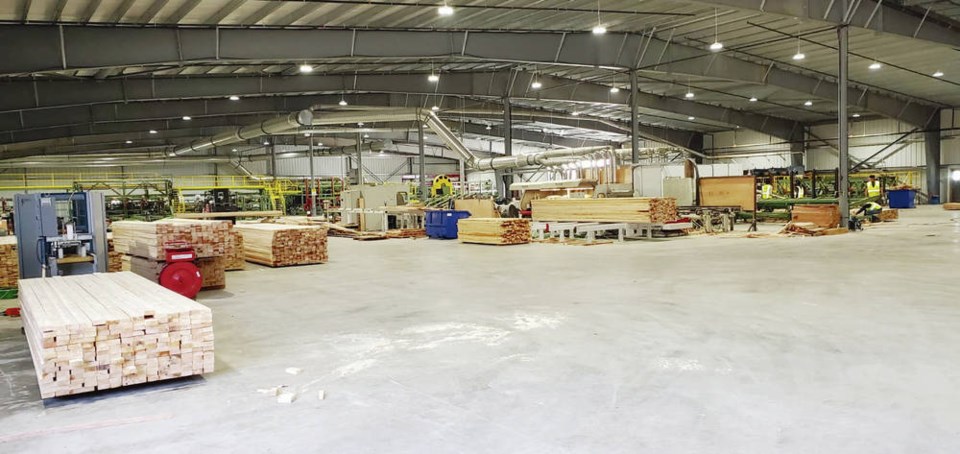The future of the province’s forest industry includes more access to timber for a broader group of companies and communities, increased emphasis on the value-added sector, further protection of old-growth forest and an increased role for First Nations.
The goals were in policy documents released Tuesday, outlining how the province intends to change forest policy over the next two years.
“Current forestry policies put in place two decades ago don’t adequately address today’s challenges,” said Premier John Horgan. “They have limited our options to adapt to the impacts of climate change, protect old growth, share the benefits fairly with local communities or move forward on reconciliation.”
The new policies include looking at the current forest tenure system and making changes to improve access to timber for smaller companies and value-added manufacturers, and increasing to 20 per cent the tenure held by First Nations from its current 10 per cent.
“It means looking at those who want access to fibre to create wealth and create jobs,” said Horgan, noting five forest companies currently have access to about 50 per cent of forest tenures in B.C. “And we look to First Nations first and foremost as we build out a modern forest industry.”
Kamal Sanghera, chief executive of San Group, said the new policies seem tailor-made for his company, which has invested about $100 million to establish three new facilities in Port Alberni that employ 425 people.
The investment includes a 300,000 square foot value-added plant that Sanghera said can produce pretty much anything in a home that’s made from wood.
Sanghera said they are keeping fibre in the valley and creating jobs, and now he’s just hoping the province’s commitment to ensuring fibre supply comes through.
The new policies will include a framework for compensation for companies such as Western Forest Products, Canfor and West Fraser that lose harvesting rights.
“They have to understand the old chasing volume is no longer viable in a time of climate change,” Horgan said.
Don Demens, chief executive of Western, said the company is supportive of the new direction, particularly with regard to First Nations.
“Western has been working to advance reconciliation through the development of mutually beneficial partnerships with Indigenous communities such as our partnership with the Huu-ay-aht First Nation in Tree Farm Licence 44,” he said. “We are committed to work collaboratively with the province, First Nations, local communities and stakeholders to define the path forward on old growth.”
The province committed to setting aside more old-growth forest, and continue to implement the 14 recommendations in “A New Future for Old Forests,” a review of how B.C. manages old growth released last year.
That report called for protection of old growth and spurred the province to protect 200,000 hectares of old growth and 1,500 groves of ancient trees. It called for full involvement of Indigenous people in the review and implementation of forest policy.
Horgan said Tuesday there is still more to do on protecting old growth but it would take time.
The Wilderness Committee said Horgan missed out on an opportunity to protect old growth and de-escalate the conflict brewing near Port Renfrew. About 140 people have been arrested as RCMP remove blockades aimed at preventing the Teal-Jones Group from logging in the Fairy Creek watershed.
“John Horgan made big promises on old-growth, but instead of stepping up and keeping them he’s skirting around them and issuing out-of-touch statements while continuing to heel-drag and stall,” said campaign director Torrance Coste. “He needs to put a hold on old-growth logging.”
The Wilderness Committee called for immediate deferrals of all at-risk old-growth forests, with complete compensation for First Nations, other communities and contractors who may lose revenue and income as a result.
“People across B.C. were hoping to see leadership from this provincial government on old growth, but the premier has completely disappointed them today,” said Tzeporah Berman, program director at Stand.earth. “As the premier spoke, ancient trees were falling and people were being arrested to defend old growth forests at Fairy Creek.”
Sierra Club B.C. forest campaigner Jens Wieting called Horgan’s claims of protecting old growth outrageous. “Today’s announcement was an Orwellian nightmare. The outrageous claims by Premier John Horgan about how much old-growth is already protected and the extent of old-growth protections enacted during his government is quickly destroying any and all remaining trust that his government is sincere about its promise to protect at-risk forests before it’s too late.
Horgan said he understood the passion of those protesting.
“I appreciate that passion, I share that passion,” he said. He noted one of the 14 recommendations in the old-growth review is to consult with First Nations. The Pacheedaht First Nation has said it would determine what will be logged and preserved in its territory. “If we were to arbitrarily put deferrals in place there, that would be a return to the colonialism that we have so graphically been brought back to as a result of issues in Kamloops this week,” he said. “I’m not prepared to do that.”



